The Wesleyan Church, also known as the Wesleyan Methodist Church and Wesleyan Holiness Church depending on the region, is a Methodist Christian denomination in the United States, Canada, the United Kingdom, South Africa, Namibia, Sierra Leone, Liberia, Indonesia, and Australia. The church is aligned with the Wesleyan-Holiness movement and has roots in the teachings of John Wesley. It adheres to Wesleyan-Arminian doctrine and is a member of the World Methodist Council.

The African Methodist Episcopal Zion Church, or the AME Zion Church (AMEZ) is a historically African-American Christian denomination based in the United States. It was officially formed in 1821 in New York City, but operated for a number of years before then. The African Methodist Episcopal Zion Church adheres to Wesleyan-Arminian theology.
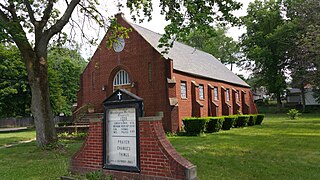
The Wesleyan Methodist Church was a Methodist denomination in the United States organized on May 13, 1841.

Thomas Bramwell Welch was a British–American Methodist minister and dentist. He pioneered the use of pasteurization as a means of preventing the fermentation of grape juice. He persuaded local churches to adopt this non-alcoholic wine substitute for use in Holy Communion, calling it "Dr. Welch's Unfermented Wine". The company he founded is now called Welch's.
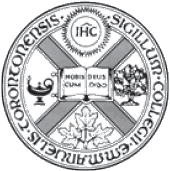
Emmanuel College is the theological college of Victoria University under the University of Toronto. Affiliated with the United Church of Canada, it is also a member institution of the Toronto School of Theology. The college's principal is HyeRan Kim-Cragg.
Charles Kittredge True was a United States Methodist Episcopal clergyman, educator, and author.

Osmon Cleander Baker was an American biblical scholar and bishop of the Methodist Episcopal Church. He was born and educated in New England, where he also served as pastor, principal and bishop.
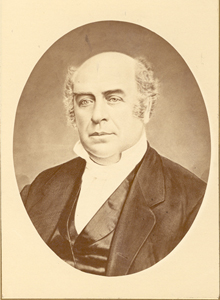
Jesse Truesdell Peck was an American bishop of the Methodist Episcopal Church, elected in 1872.

The Rev. James Roscoe Day, D.D., L.L.D. was an American Methodist minister, educator and chancellor of Syracuse University.
Roy Hunter Short was an American bishop of The Methodist Church and the United Methodist Church, elected in 1948.
Marshall Russell Reed was an American bishop of The Methodist Church and the United Methodist Church, elected in 1948.
The Rev. Titus Lowe was an English-American bishop of the Methodist Episcopal Church and The Methodist Church, elected in 1924.
The Genesee Wesleyan Seminary was the name of two institutions located on the same site in Lima, New York.
Wesleyan Academy was the first name of one of the oldest educational institutions of the Methodist Episcopal Church. It was established by Methodist clergy of New England in 1818. Originally located in New Market, New Hampshire, before moving to Wilbraham, Massachusetts, it was intended both for general educational purposes and for young men and women intending to enter the ordained ministry. It opened with ten students, 5 women and 5 men.

John W. Gowdy was a Scottish American bishop of the Methodist Episcopal Church and The Methodist Church, elected in 1930. He also distinguished himself as a missionary, an educator, and as a college and university president.
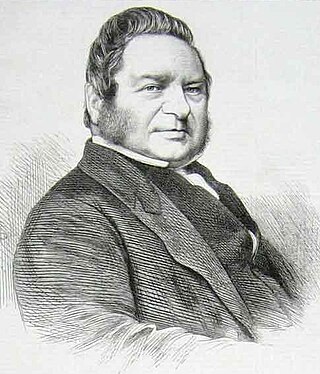
Rev. Frederick James Jobson D.D. - commonly styled F. J. Jobson - painter, architect and Wesleyan Methodist minister, became President of the Methodist Conference in 1869, and Treasurer of the Wesleyan Methodist Foreign Mission Society, 1869–1882. Alongside his important role in encouraging Methodist architecture, he was the author of devotional, architectural, biographical and travel books - which, combined with his role superintending the Wesleyan Methodist Magazine for over a decade and related duties - led to a great expansion of Methodist publishing. His topographical paintings provide a further legacy.
The Cyclopædia of Biblical, Theological and Ecclesiastical Literature is a reference work of ten volumes and two supplements published in the late 19th century, co-authored by John McClintock, academic and minister, and James Strong, professor of exegetical theology. The volumes were published by Harper and Brothers of New York.
Genesee College was founded as the Genesee Wesleyan Seminary, in 1831, by the Methodist Episcopal Church. The college was located in Lima, New York, and eventually relocated to Syracuse, becoming Syracuse University.
George Peck was a minister in the Methodist Episcopal Church who helped to found Cazenovia Seminary, and became its president in 1835.
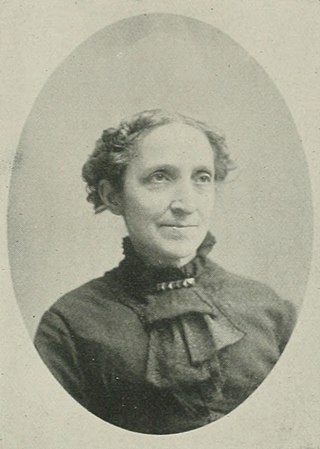
Mary Helen Peck Crane was a 19th-century American church and temperance activist, as well as a writer. She was the mother of the writer, Stephen Crane. She died in 1891.









